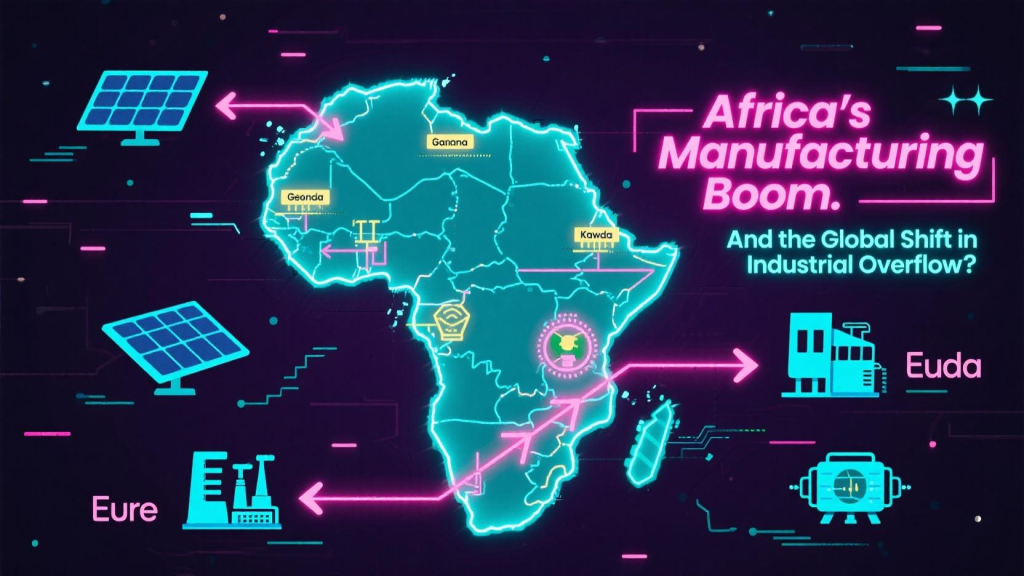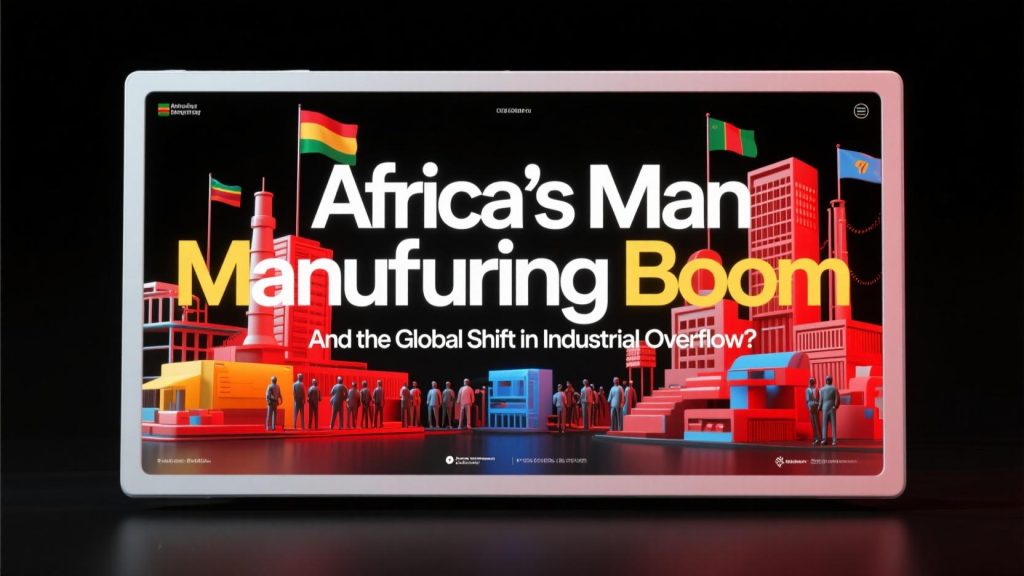From Overflow to Opportunity — How Africa Is Joining the Global Production Grid
In 2025, a new player is entering the manufacturing game — and it’s not in Asia. Sub-Saharan Africa, long viewed mainly as a resource supplier, is rapidly becoming a destination for industrial overflow as global manufacturers seek low-cost, scalable alternatives outside traditional hubs.
Why Now?

Several forces have aligned:
Labor costs in Southeast Asia are rising.
Logistics tech (like drone delivery and AI-based supply planning) reduces the risk of remote production.
Major trade agreements like the African Continental Free Trade Area (AfCFTA) enable cross-border production zones within Africa.
Countries such as Ethiopia, Rwanda, Ghana, and Senegal are leveraging government-backed industrial parks and public–private partnerships to attract light manufacturing, especially textiles, auto parts, and agro-processing.
China’s Role: From Factory to Financier
Interestingly, China — once the go-to hub — is now investing heavily in African manufacturing as part of its “Export Overflow Strategy.” Chinese firms are relocating labor-intensive operations to Africa while maintaining design and management back home.
For example, the Hawassa Industrial Park in Ethiopia hosts over 30 textile factories, most of which supply global fast fashion brands from China, India, and Europe.
Tech-Enabled Leapfrogging
Africa’s advantage is not just low cost — it’s the opportunity to build smart manufacturing from the ground up:
AI-powered quality control systems are being implemented in Ghanaian garment factories.
5G-enabled sensors track production output in Nigeria’s new tech assembly lines.
Solar-powered industrial parks in Kenya ensure green energy compliance for EU export standards.
Export Corridors and Market Integration

New trade corridors like LAPSSET (linking Kenya to Ethiopia and South Sudan) and the West Africa Growth Belt are improving port access and reducing freight times. With improved rail and port infrastructure, African-made goods are increasingly feeding European, Middle Eastern, and South Asian markets.
Key Takeaway
Africa is not just the next outsourcing destination — it’s shaping up to be a key node in the future global manufacturing matrix, offering cost efficiency, digital adaptability, and regional integration.
“We’re not filling gaps anymore — we’re building capacity,” says Lillian Okonkwo, CEO of MadeInAfrica Holdings.
